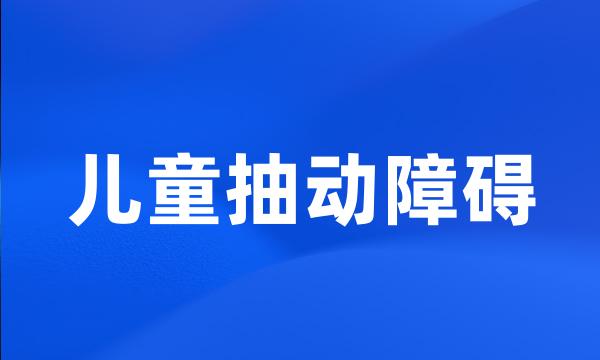儿童抽动障碍
- 网络Tic Disorder
 儿童抽动障碍
儿童抽动障碍-
儿童抽动障碍ASO、IL-6和IL-8水平的研究
T-cell Subpopulations , ASO , IL-6 and IL-8 in Children with Tic Disorder
-
目的:观察儿童抽动障碍患者抗链球菌溶血素O、T淋巴细胞亚群、血清IL-6、IL-8水平的变化,以探讨其发病可能机理。
Objective : To observe the changes of blood T-cell subpopulations , ASO , IL-6 and IL-8 in children with Tic disorder and explore the pathogenesis .
-
儿童抽动障碍与微小病毒B(19)感染和免疫功能
Human Parvovirus B_ 19 and Immune Function in Children with Tic Disorder
-
方法:对52例儿童抽动障碍患者和30例正常儿童分别采用间接免疫SAP花环法检测T淋巴细胞亚群和ELISA法检测血清IL-6和IL-8水平。
Methods : T-cell subpopulations and concentration of IL-6 , IL-8 , ASO were measured in 52 children with tic disorder and 30 normal children using SAP and ELISA .
-
目的探讨儿童抽动障碍患者事件相关电位N400的变化及其意义。
Objective To investigate the change of event-related potentials ( ERPs ) N400 and its significances in children with Tic disorders .
-
目的探讨兴奋性氨基酸(EAAs)中谷氨酸(GLU)、天门冬氨酸(ASP)在儿童抽动障碍发病机制中的作用。
Objective To investigate the role of some excitatory amino acid ( EAA ) such as glutamic acid ( GLU ) and aspartic acid ( ASP ) in pathological mechanism of tic disorders ( TD ) in children .
-
结论儿童抽动障碍发病与性别、年龄有关;
Conclusion The children 's TD is associated with sex , age .
-
心理干预与药物治疗儿童抽动障碍的效果比较
Psychological intervention versus drug treatment in children with tic disorder
-
儿童抽动障碍与A族溶血性链球菌感染关系的研究
The Study of Relationship of Group A Hemolytic Streptococcal Infection and Tic Disorders
-
脑电生物反馈治疗儿童抽动障碍疗效研究
A preliminary study on the curative effect of electroencephalogram biofeedback treatment on child tic disorder
-
生物反馈对儿童抽动障碍及共患症的疗效研究
A Preliminary Study on the Curative Effect of Biofeedback Treatment on Child with Tic Disorder and Comorbidity
-
儿童抽动障碍血浆兴奋性氨基酸水平与行为心理的相关性研究
Study on the plasm level of excitatory amino acid and be behavioral psychology in children with tic disorders
-
目的:探讨心理治疗儿童抽动障碍的疗效并与药物治疗进行比较。
AIM : To study the efficacy of psychological treatment versus drug treatment in treating children 's tic disorder .
-
【目的】观察使用妥吡酯(妥泰)治疗儿童抽动障碍的临床疗效以及药物的安全性。
[ Objective ] To observe the clinical effects and side effects of TPM on treatment of tic dsorder ( TD ) .
-
目的:比较阿立哌唑与泰必利治疗儿童抽动障碍的疗效和安全性。
OBJECTIVE : To evaluate the efficacy and safety of aripiprazole in the treatment of tic disorder when tiapride is used as a control .
-
结论脑电生物反馈治疗儿童抽动障碍优于药物治疗,既无创伤,又无副作用,疗效显著。
Conclusion the curative effect of EEG biofeedback treatment is significantly better than that of medicine treatment in child tic disorder without wound , side effects and repetition .
-
长沙市一所小学和中学6-15岁学龄儿童抽动障碍现状调查1996年和2000年各类神经症均为女性略多于男性,均集中在中学文化程度。
A Survey on Tic Disorder of Children aged 6-15 Years Women with neurosis was all more than men in 1996 and in 2000 . Most of them only received high school education .
-
结论抽动障碍患儿存在细胞免疫功能紊乱,表现为T淋巴细胞亚群平衡失调和自然杀伤细胞阳性率低。提示细胞免疫功能紊乱可能与某些儿童易患抽动障碍有关。
Conclusions The present study demonstrates that the cell immune functional state of T lymphocytes and NKC in children with TD were at low level underlying the disease .
